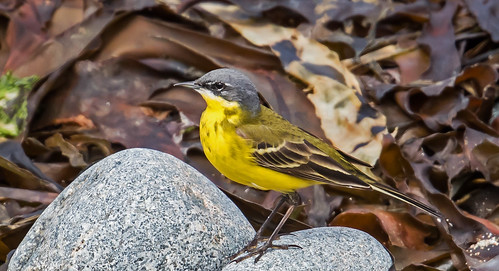Of Arabidopsis miR398 (Jones-Rhoades and Bartel, 2004), whereas singlenucleotide bulges between other seed-pairing positions have not been reported in other validated plant targets. A bulge between these nucleotides is also observed within the very first let-7 internet site inside the C. elegans lin-41 three UTR, one of many archetypal 3-compensatory web sites (Reinhart et al., 2000; Bartel, 2009). Taken with each other, these observations suggest that one of the most tolerated bulge in miRNA seed pairing is in between the target nucleotides that pair to miRNA nucleotides four and 5. Some motifs, particularly the additional degenerate ones, have been identified in the majority of the interactions, whereas other motifs were found in only a small minority (Figure 2C and Figure 2–figure supplement 1B). We suspect that numerous of your interactions lacking the top-scoring motifs also involve non-canonical binding web-sites, a number of which may possibly function through degenerate versions with the motif that happened to have scored highest in the MEME analysis. Nonetheless, some interactions or CLIP clusters lacking the top-scoring motifs may possibly represent background (Friedersdorf and Keene, 2014), and indeed some using the motif or even with a canonical web site may represent background. In sum,  our analyses of the CLIP datasets confirmed that several on the CLIP clusters and CLASH chimera interactions lacking a seed match nonetheless capture authentic miRNA-binding sites–otherwise the leading enriched motifs wouldn’t pair so generally to the cognate miRNA. In spite of this potential to bind the miRNA in vivo and to function in the sense that they contribute to ATP-polyamine-biotin site cellular TA (Denzler et al., 2014), we classify the CLIP-identified non-canonical web-sites as non-functional with respect to repression because they showed no sign of mediating repression and no signal for miRNAdependent conservation (Figure 1 and Figure 1–figure supplements 1). As a result, the only identified non-canonical web site kinds that mediate repression are the 3-supplementary, centered, and cleavage site varieties, which with each other comprise 1 with the efficient web-sites that at the moment is often predicted (Friedman et al., 2009; Shin et al., 2010). While we cannot exclude the possibility that extra sorts of functional non-canonical web-sites could possibly exist but have not yet been characterized towards the point that they will be utilized for miRNA target prediction (Lal et al., 2009), our evaluation of the CLIP benefits justified a concentrate on the abundant website varieties which can be predictive of targeting and are at the very least marginally functional, that is certainly, the canonical seed-matched PubMed ID:http://www.ncbi.nlm.nih.gov/pubmed/21352253 websites, including 6mer and offset-6mer websites.Enhancing dataset quality for model developmentTo identify functions involved in mammalian miRNA targeting, we analyzed the results of microarray datasets reporting the mRNA adjustments right after transfecting either a miRNA or siRNA (collectively referred to as compact RNAs, abbreviated as sRNAs) into HeLa cells. In the published datasets, we employed the set of 74 experiments that had previously been selected mainly because every (1) had a clear signal for sRNAbased repression, (2) was acquired working with the exact same Agilent array platform, and (3) reported around the effects of a distinctive seed sequence (Garcia et al., 2011). Despite the variations amongst the 74 transfected sRNAs, mRNA fold alterations of some arrays had been highly correlated with those of others, which indicated that sRNA-independent effects dominated (Figure 3A). When all 74 datasets were compared against one another, those from either the identical group of experiments (Anderson et al., 2008) or t.
our analyses of the CLIP datasets confirmed that several on the CLIP clusters and CLASH chimera interactions lacking a seed match nonetheless capture authentic miRNA-binding sites–otherwise the leading enriched motifs wouldn’t pair so generally to the cognate miRNA. In spite of this potential to bind the miRNA in vivo and to function in the sense that they contribute to ATP-polyamine-biotin site cellular TA (Denzler et al., 2014), we classify the CLIP-identified non-canonical web-sites as non-functional with respect to repression because they showed no sign of mediating repression and no signal for miRNAdependent conservation (Figure 1 and Figure 1–figure supplements 1). As a result, the only identified non-canonical web site kinds that mediate repression are the 3-supplementary, centered, and cleavage site varieties, which with each other comprise 1 with the efficient web-sites that at the moment is often predicted (Friedman et al., 2009; Shin et al., 2010). While we cannot exclude the possibility that extra sorts of functional non-canonical web-sites could possibly exist but have not yet been characterized towards the point that they will be utilized for miRNA target prediction (Lal et al., 2009), our evaluation of the CLIP benefits justified a concentrate on the abundant website varieties which can be predictive of targeting and are at the very least marginally functional, that is certainly, the canonical seed-matched PubMed ID:http://www.ncbi.nlm.nih.gov/pubmed/21352253 websites, including 6mer and offset-6mer websites.Enhancing dataset quality for model developmentTo identify functions involved in mammalian miRNA targeting, we analyzed the results of microarray datasets reporting the mRNA adjustments right after transfecting either a miRNA or siRNA (collectively referred to as compact RNAs, abbreviated as sRNAs) into HeLa cells. In the published datasets, we employed the set of 74 experiments that had previously been selected mainly because every (1) had a clear signal for sRNAbased repression, (2) was acquired working with the exact same Agilent array platform, and (3) reported around the effects of a distinctive seed sequence (Garcia et al., 2011). Despite the variations amongst the 74 transfected sRNAs, mRNA fold alterations of some arrays had been highly correlated with those of others, which indicated that sRNA-independent effects dominated (Figure 3A). When all 74 datasets were compared against one another, those from either the identical group of experiments (Anderson et al., 2008) or t.
